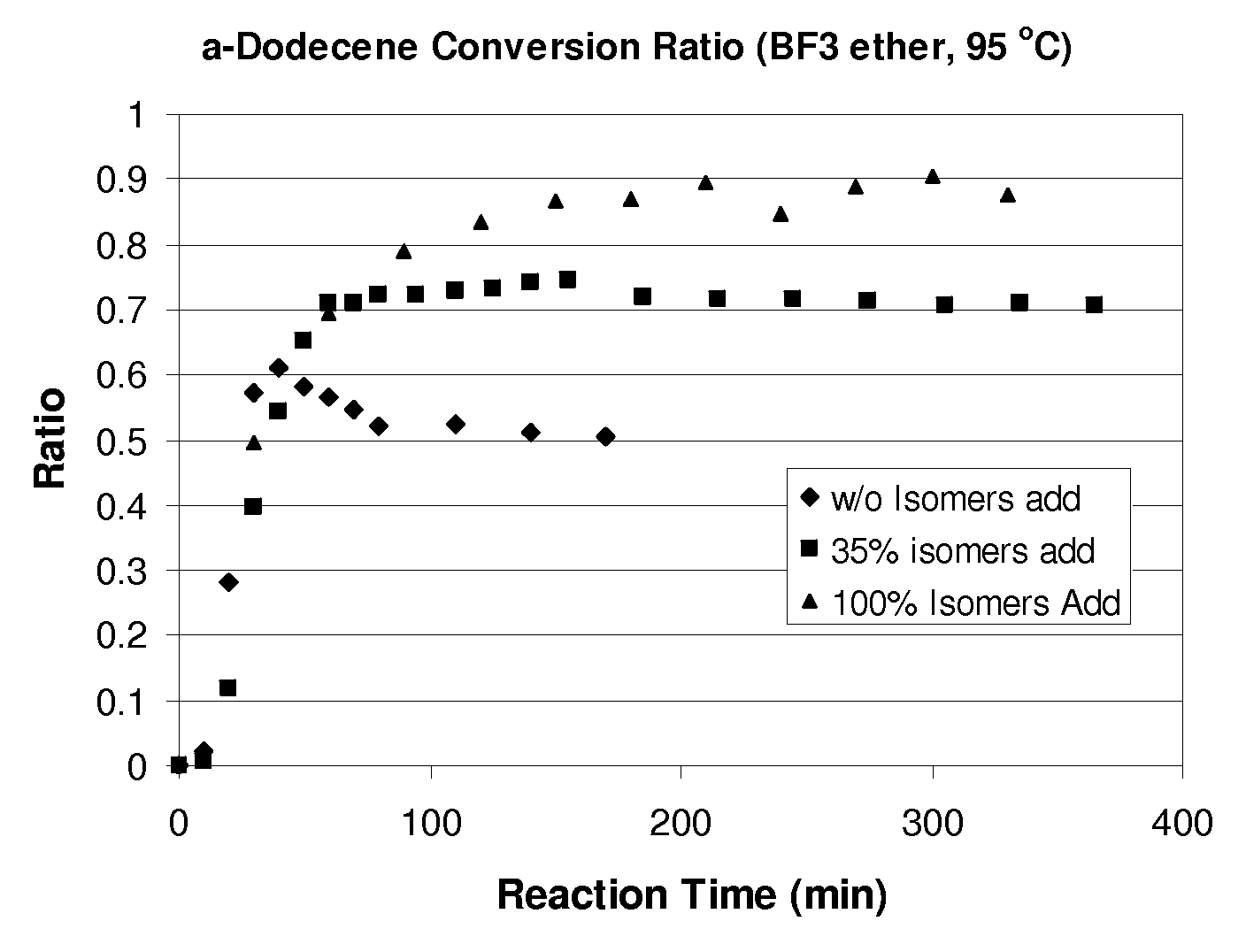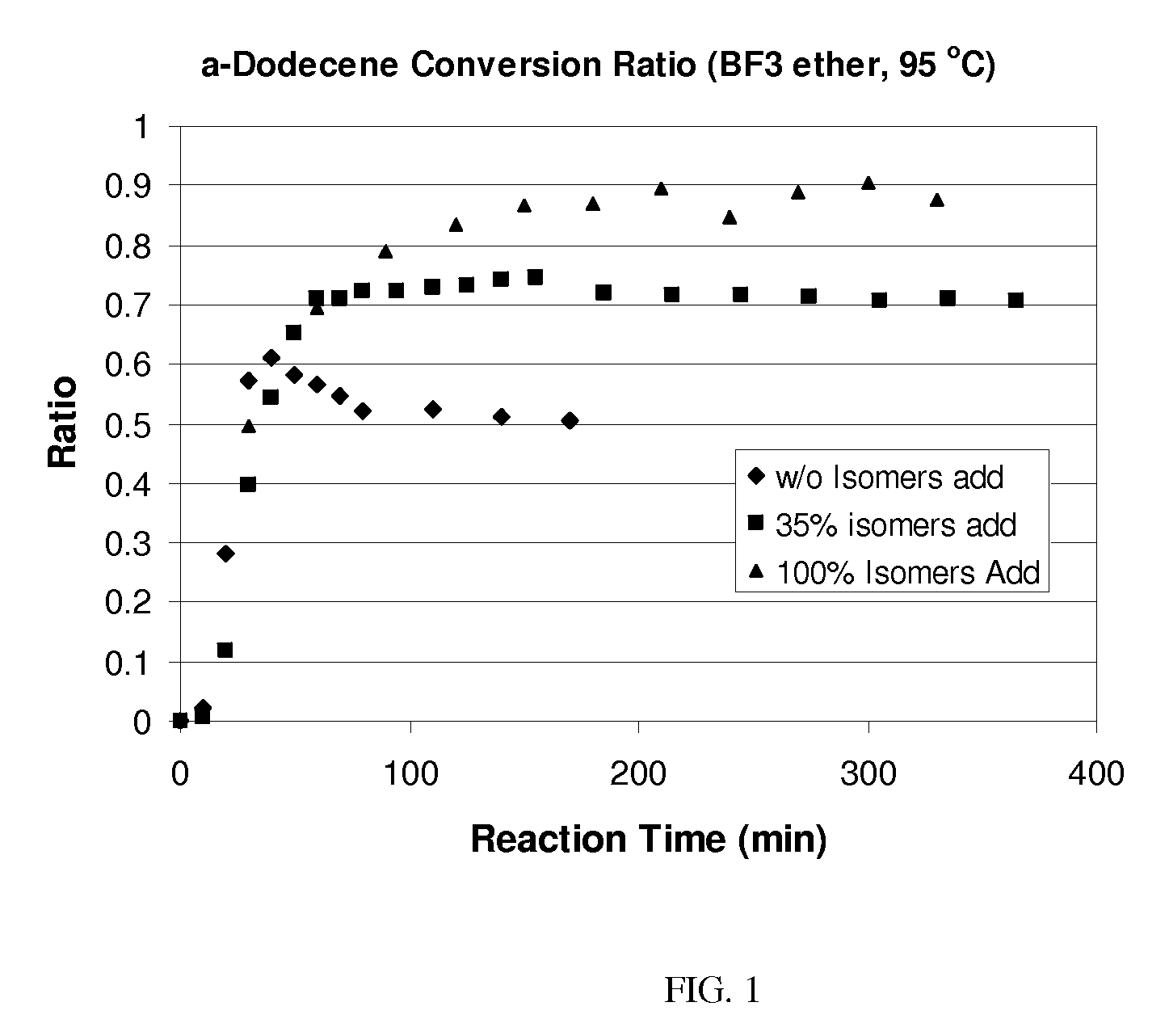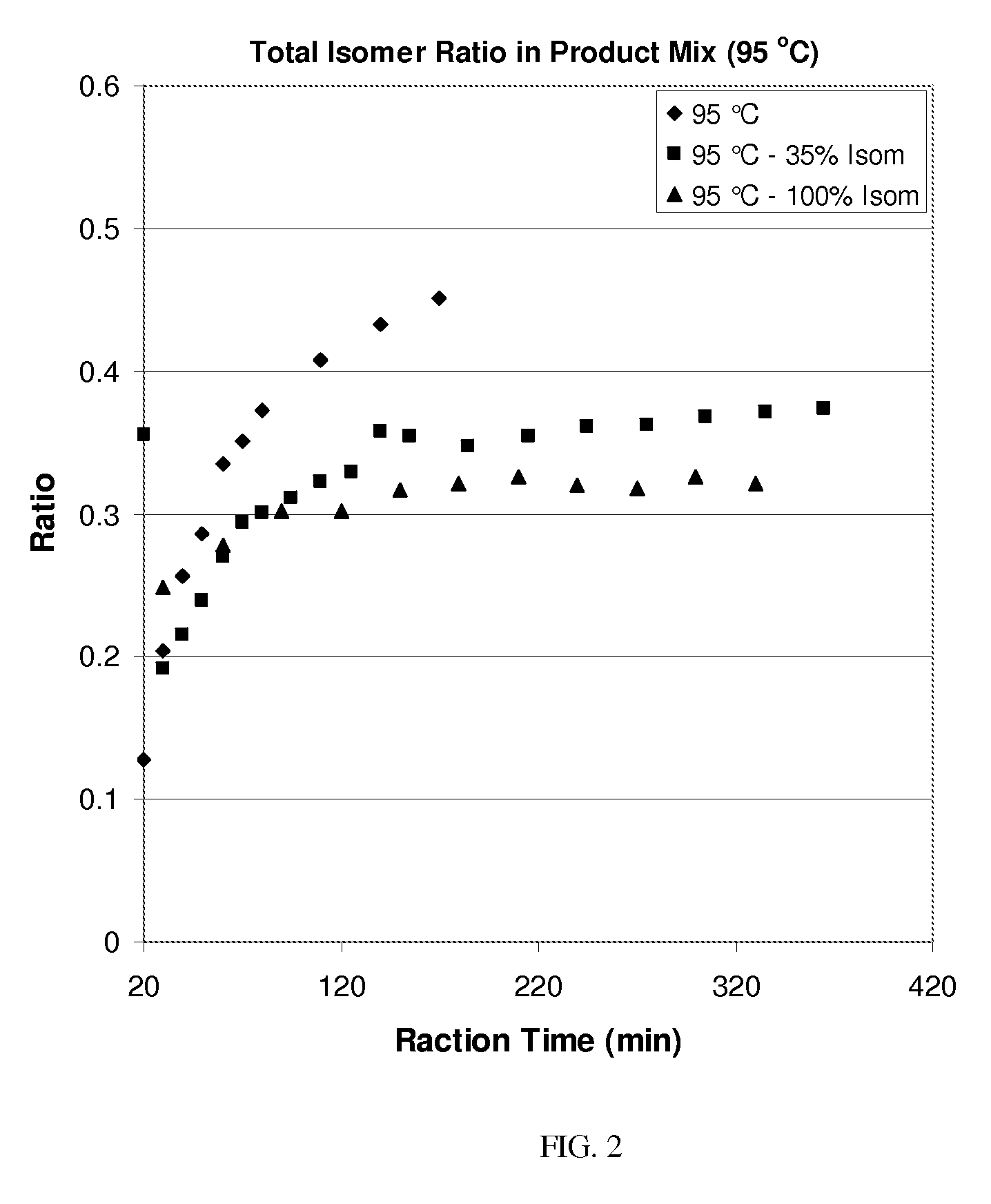Process for olefin etherification
a technology of etherification and olefins, which is applied in the field of etherification of olefins, can solve the problems of low conversion of olefins to desired ethers, limited commercial viability of this process, and large excesses of reactants in the prior ar
- Summary
- Abstract
- Description
- Claims
- Application Information
AI Technical Summary
Benefits of technology
Problems solved by technology
Method used
Image
Examples
example i-1
Comparative
Reaction of 1-Dodecene and 1,3-Dichloro-2-propanol Using Trifluoromethanesulfonic Acid
[0062]A 1-L round-bottom flask is charged with 206.5 g (1.60 mol) of 1,3-dichloro-2-propanol (“DCP”), 1.32 g of trifluoromethanesulfonic (triflic) acid, and reacted at 80 to 85° C. with 271.8 g (1.62 mol) of 1-dodecene, added in approximately 50-g portions over 6 hours. GC analysis of the final reaction product finds 25.9 wt % 1,3-dichloro-2-propanol, 33.6 wt % of dodecene (mixture of isomers), and 37.1 wt % of the 1,3-dichloropropyl ether of dodecane (mixture of positional isomers). The cooled reaction mixture (479.6 g) is added to 3.5 g of sodium carbonate and 10 g sodium chloride in 100 g of water. The top layer (399.58 g), containing 35.0 wt %, (or 171.1 g) of the 1,3-dichloropropyl ether of dodecane (mixture of positional isomers) is removed and a 360.2 g portion purified by distillation to afford 139.1 g of the 1,3-dichloropropyl ether of dodecane (mixture of positional isomers) (b...
example i-2
Comparative
Reaction of 1-Dodecene and 1,3-Dichloro-2-propanol Using Methanesulfonic Acid
[0063]A 1-L round-bottom flask is charged with 173 g (1.34 mol) of 1,3-dichloro-2-propanol, 15.96 g of methanesulfonic acid, and reacted at 80 to 85° C. with 226.6 g (1.34 mol) of 1-dodecene, added in 2 portions, and held overnight at temperature. GC analysis of the final reaction product finds 27.3 wt % 1,3-dichloro-2-propanol, 34.8 wt % of dodecene (mixture of isomers), and 32.8 wt % of the 1,3-dichloropropyl ether of dodecane (mixture of positional isomers).
example i-3
Comparative
Etherification of 1-Dodecene Using DOWEX DR-2030 Resin
[0064]A 100-mL round bottom flask is charged with 0.92 g of DOWEX DR-2030 resin, 7.90 g (0.061 mol) of 1,3-dichloro-2-propanol, and 10.36 g (0.062 mol) of 1-docenene. The mixture is warmed to 80 to 100° C. for 2 hours. GC analysis of the solution finds 28.4 wt % 1,3-dichloro-2-propanol, 41.8 wt % of dodecene (mixture of isomers), and 26.6 wt % of the 1,3-dichloropropyl ether of dodecane (mixture of positional isomers). After holding overnight at 100° C., GC analysis of the solution finds 35.0 wt % 1,3-dichloro-2-propanol, 44.9 wt % of dodecene (mixture of isomers), and 21.8 wt % of the 1,3-dichloropropyl ether of dodecane (mixture of positional isomers).
PUM
| Property | Measurement | Unit |
|---|---|---|
| temperature | aaaaa | aaaaa |
| temperature | aaaaa | aaaaa |
| temperature | aaaaa | aaaaa |
Abstract
Description
Claims
Application Information
 Login to View More
Login to View More - R&D
- Intellectual Property
- Life Sciences
- Materials
- Tech Scout
- Unparalleled Data Quality
- Higher Quality Content
- 60% Fewer Hallucinations
Browse by: Latest US Patents, China's latest patents, Technical Efficacy Thesaurus, Application Domain, Technology Topic, Popular Technical Reports.
© 2025 PatSnap. All rights reserved.Legal|Privacy policy|Modern Slavery Act Transparency Statement|Sitemap|About US| Contact US: help@patsnap.com



